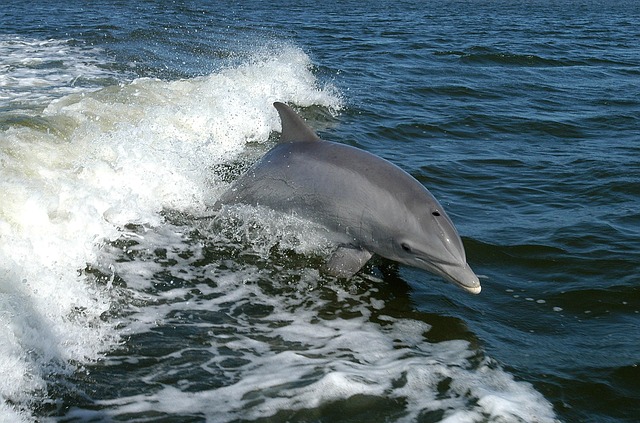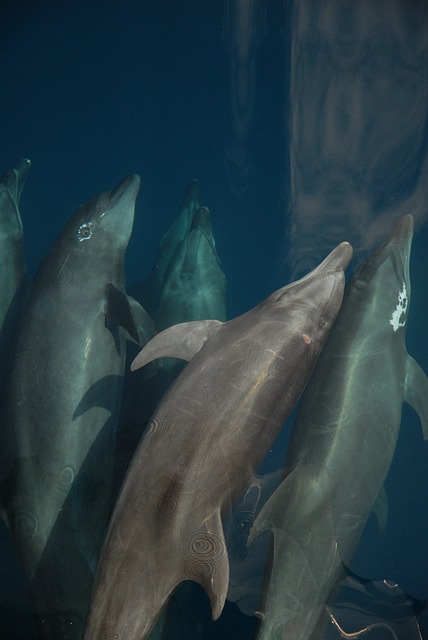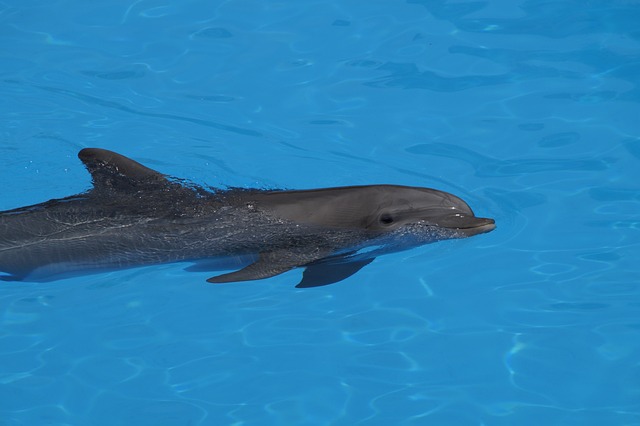In this article we bring you 50 interesting facts about Bottlenose dolphins
Scientific Name: Bottlenose dolphins belong to the genus Tursiops.
Common Species: The common bottlenose dolphin (Tursiops truncatus) is the most well-known species of bottlenose dolphin.
Range: They are found in warm and temperate oceans worldwide.
Size: Adult bottlenose dolphins can reach lengths of 8 to 12 feet (2.5 to 4 meters).
Weight: They typically weigh between 440 to 660 pounds (200 to 300 kilograms).
Lifespan: In the wild, they can live up to 40-50 years, while in captivity, they may live shorter lives.

Social Animals: Bottlenose dolphins are highly social creatures and often travel in groups called pods, which can range in size from a few individuals to several hundred.
Communication: Dolphins use a complex system of clicks, whistles, and body language to communicate with each other.
Echolocation: They use echolocation to locate prey and navigate in their environment by emitting sound waves and listening for the echoes that bounce back.
Intelligence: Bottlenose dolphins are known for their high intelligence and problem-solving abilities.
Playful Nature: They are playful animals and are often seen riding the bow waves of boats and jumping out of the water.
Dorsal Fin: They have a distinctive curved dorsal fin on their back.
Coloration: Their skin is typically gray, but it can vary in shade from light gray to nearly black.
Temperature Regulation: Dolphins can regulate their body temperature, which allows them to thrive in a variety of water temperatures.
Diet: They primarily feed on fish and squid, but their diet can vary depending on their location and available prey.
Hunting Techniques: Dolphins are skilled hunters and may use techniques like herding fish into tight groups or stunning prey with their tails.
Breathing: They are mammals and need to come to the surface to breathe air. They have blowholes on top of their heads for this purpose.
Speed: Bottlenose dolphins are fast swimmers and can reach speeds of up to 20 miles per hour (32 kilometers per hour).
Sleep Patterns: Dolphins sleep with one hemisphere of their brain at a time, allowing them to stay alert even while resting.
Birth: Female dolphins give birth to live young, and the mother and other members of the pod assist in caring for the calf.
Calving Interval: Female dolphins typically have a calving interval of 2 to 3 years.
Play Behavior: Dolphins are known to play with seaweed, other animals, and even items they find in the water.
Social Hierarchy: They have a complex social hierarchy within their pods.
Tool Use: Bottlenose dolphins have been observed using sponges to protect their rostrums (snouts) while foraging on the ocean floor.
Matrilineal Pods: Pods are often made up of related females and their offspring, and they can stay together for many years.
Communication with Clicks: Dolphins use clicks for echolocation and to stun prey.

Communication with Whistles: Whistles are often used for social communication and individual identification.
Signature Whistles: Each dolphin has a unique signature whistle, which acts like a name and helps individuals recognize each other.
Vocal Mimicry: Dolphins are capable of mimicking sounds from their environment and even imitating human-made sounds.
Migration: Some bottlenose dolphin populations are migratory, while others are more sedentary.
Feeding Frenzies: They can engage in feeding frenzies, where they work together to catch large schools of fish.
Conservation Status: The conservation status of bottlenose dolphins varies by region, but they are generally considered a species of “Least Concern” by the IUCN.
Threats: Common threats to bottlenose dolphins include habitat loss, pollution, entanglement in fishing gear, and boat strikes.
Rehabilitation: Many organizations work to rescue and rehabilitate injured or stranded dolphins.
Adaptability: Bottlenose dolphins have adapted to a wide range of environments, from coastal areas to open ocean.
Human Interaction: They have a long history of interaction with humans, including in mythology and literature.
Marine Parks: Bottlenose dolphins are commonly found in marine parks and aquariums, where they can help educate the public about marine conservation.
Tactile Communication: Dolphins use physical touch and body contact as a form of communication and social bonding.
Inquisitive Nature: They are known for their curiosity and may investigate unfamiliar objects or creatures.
Fast Learners: Dolphins can quickly learn and perform tricks and behaviors in captivity.
Birth in Water: Bottlenose dolphins give birth to their calves in the water, typically with other members of the pod nearby.
Nursing: Calves are nursed by their mothers and rely on milk for the first several months of their lives.
Teeth: They have sharp teeth that are used for grasping and tearing prey.
Sexual Dimorphism: Male bottlenose dolphins are generally larger than females.
Whiskers: They have tiny, sensitive whiskers around their rostrums, which can help them detect subtle movements in the water.

Parental Care: Female dolphins are attentive mothers and provide care and protection to their offspring.
Sonar-Like Abilities: Dolphins’ echolocation abilities are often likened to a form of natural sonar.
Group Dynamics: Pod dynamics can be quite complex, with individuals forming alliances and hierarchies.
Versatile Eaters: While fish and squid are their primary food sources, they may also eat shrimp, crabs, and other marine creatures.
Unique Personalities: Just like humans, individual dolphins can have unique personalities, with some being more social, while others may be more solitary.
These facts provide a glimpse into the fascinating world of bottlenose dolphins and their behaviors, adaptations, and importance in marine ecosystems.
